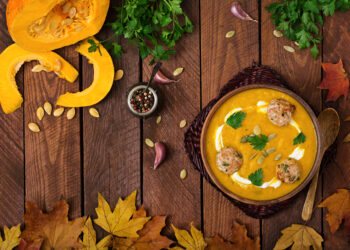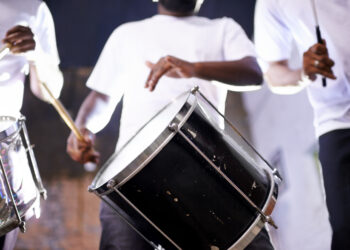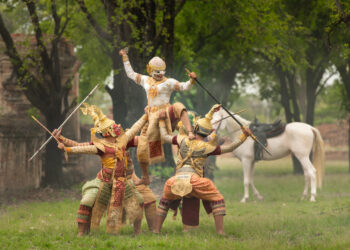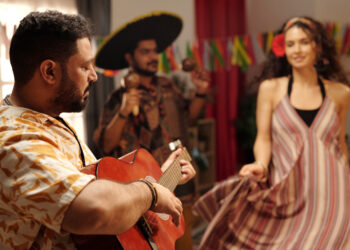Film Soundtracks That Shaped the Diaspora possess a remarkable ability to traverse both space and time, subtly weaving themselves into the fabric of personal and communal experience. They are not merely musical accompaniments; they function as cultural conduits, carrying the sounds, sentiments, and stories of one place into the lives of communities dispersed across the globe. For diaspora audiences, a single note or familiar chorus can evoke a complex tapestry of memory, belonging, and identity, linking generations and geographies in ways that words alone often cannot.
These soundtracks, from the vibrant, narrative-driven compositions of Bollywood to the evocative, rhythmically rich strains of roots reggae, do more than entertain. They offer a means for diaspora communities to define, preserve, and reinterpret their cultural heritage while navigating life far from their ancestral homes. This exploration examines how these musical narratives have travelled, evolved, and anchored communities, illustrating the subtle power of film music to shape identity and foster connections across continents. Through this lens, one can appreciate not only the artistry of the music itself but also its enduring role in sustaining the diasporic imagination.
Why soundtracks matter to the diaspora?
Film soundtracks are far more than mere accompaniment; they serve as repositories of emotion and cultural memory. Within diaspora communities, they operate as vital links between the homeland and the adopted country, articulating narratives of migration, nostalgia, belonging, and identity reconstruction. As academic research observes, “The music while identifiably ‘Indian’ manages to perform a modern music score … with western instruments playing alongside Indian ones.”
In essence, these soundtracks function as musical emissaries, carrying the resonance of home across borders. For individuals living in cities such as London, Toronto, or Port of Spain, with ancestral ties to Delhi, Chennai, or Kingston, these melodies are far from incidental—they are touchstones that anchor memory, cultivate connection, and provide a framework for navigating life in new cultural landscapes.
Bollywood’s sonic export: how Hindi film songs travelled?
We begin with Bollywood, a dominant and influential force in global cinema. For many within the South Asian diaspora, the resonance of Hindi film songs permeates family gatherings, weddings, radio programming, and wider popular culture. Research highlights that Hindi film music “has been the single most popular kind of music among Indo-Trinidadians and Guyanese … despite their ‘limited ability to understand the lyrics’,” underscoring its significance as a cultural and emotional touchstone beyond linguistic comprehension.
1. Case study: Dilwale Dulhania Le Jayenge (1995)
The soundtrack to this iconic film sold millions of units and became part of the Bollywood‑diaspora lexicon. It’s more than just romance on screen—it became an anthem for young British‑Asian and Indo‑Caribbean people who recognised the plot as their story: homeland aspirations, diasporic identity, longing, festive return.
2. The fusion effect: Reggae, disco, bhangra and Bollywood
Bollywood hasn’t stayed local. It’s mixed, matched and morphed. Take the 1992 film Roja, whose music by A. R. Rahman was described as “a limpid fusion of raga and reggae … sometimes it felt like listening to The Wailers playing to Indian vocals”. That’s right: reggae beat meets sitar. Its diaspora encoded in sound. And yes, it’s glorious.
3. What it means for the Indo-Caribbean and UK link?
In Trinidad, Guyana, Suriname and the UK, Hindi film songs became part of the sonic wallpaper, even for those who didn’t speak Hindi. That they didn’t matter so much—the sound, the rhythm, the feel did. As one-piece notes, “the sound of the voice rather than the words … matters to many of us.”
Hybridity in practice: where Bollywood meets Reggae
The phenomenon of hybrid soundtracks, those that deliberately blur cultural boundaries, illustrates the dynamic and multifaceted nature of diaspora identities. Diaspora experience is rarely monolithic; rather, it encompasses the simultaneous negotiation of multiple cultural affiliations.
- Bollywood Samples in Global Contexts
Scholarly analyses and industry commentary highlight how Bollywood compositions have been appropriated and reimagined by diaspora artists. As observed, “Switch and M.I.A. sample the voice of Parvati Khan … the original Bollywood song could be playing on some disco circuit around Europe and America.” Such reinterpretations exemplify how diasporic communities remix and recontextualise their musical heritage on a global stage. - The Hybrid Film Soundtrack
Hybrid soundtracks frequently appear in films portraying diasporic narratives. Consider a scene in which the protagonist dances to a bhangra rhythm layered over a reggae bassline, set within a UK diaspora context. This creative fusion reflects the lived reality of layered cultural identities, offering cinematic soundscapes that embody the complexity of transnational experience. - Cultural Significance
For communities navigating multiple cultural frameworks, hybrid soundtracks convey an essential message: there is no necessity to adhere to a singular cultural identity. They affirm that one can simultaneously inhabit multiple worlds—Bollywood and reggae, UK and Punjab—serving as a sonic bridge that unites diverse heritages within a single expressive medium.
Soundtrack moments that shaped diaspora memory
Several particularly influential soundtracks have played a pivotal role in shaping collective memory within diaspora communities. These instances, though brief in comparison to the films themselves, carry considerable cultural significance:
- The Roja Soundtrack: Its innovative integration of Indian classical music with reggae elements marked a boundary-breaking fusion that resonated across diasporic audiences.
- The Dilwale Dulhania Le Jayenge Soundtrack: This collection of songs emerged as both a social and musical landmark, frequently featured in diaspora weddings and family gatherings, embedding itself into communal life.
- The Rockers Soundtrack: By translating reggae’s socially conscious messages onto the cinematic medium, this soundtrack reverberated through Caribbean diaspora communities, reinforcing cultural narratives.
- Bollywood Innovations Incorporating Western Instruments: Such adaptations illustrate the manner in which Indian film music assimilated global musical influences, producing compositions that appealed to an international and diasporic audience.
Each of these soundtracks operated as more than mere accompaniment; they facilitated shared listening experiences, animated dance spaces, and served as markers of identity and belonging within diaspora communities.
Listening, dancing & diaspora rituals
Soundtracks connect to rituals—whether it’s a wedding on a Saturday night in London, a Sunday gathering in Queens, or a taxi‑ride in Toronto with old hits playing in the background.
- Weddings: Bollywood songs play nonstop at Indo‑Caribbean weddings; they are memory‑makers, mood‑setters, communal glue.
- Radio shows & community events: Diaspora radio programming often includes old Hindi film songs, reggae soundtracks and fusion tracks—creating sonic spaces where multiple identities collide and cohere.
- Remix culture: Young listeners in the diaspora sample, mash‑up and re-interpret these soundtracks—extending their lifeline and relevance.
When you hear that familiar refrain from your childhood home mixed with a reggae riddim, you’re not just grooving—you’re acknowledging the complex identity you carry.
What film soundtrack makers teach?
When analysed as cultural texts, film soundtracks offer several instructive insights:
- Migration in every frame: Soundtracks in diaspora-themed films frequently articulate experiences of leaving one’s homeland, establishing a new life abroad, and negotiating complex identities.
- Hybrid sonic languages: Through the blending of instruments, musical genres, and cultural motifs, these soundtracks convey hybridised identities. They reflect not solely “Indian” or “Caribbean” traditions, but composite identities such as “Indo-Caribbean,” “UK Asian,” or “West Indian with South Asian roots.”
- Memory and forward-looking narratives: These compositions serve dual purposes, preserving collective memory of homeland, language, and culture while simultaneously facilitating adaptation to new environments and evolving cultural contexts.
- Sound as a marker of belonging: The recognition of familiar songs—whether on the radio in Trinidad or in a club in Birmingham—instils a sense of connection and belonging, even in the absence of physical proximity to the homeland.
Looking ahead?
What does the future hold? A few predictions:
- More explicit fusion: Already, we see films and music labs intentionally merging Bollywood, reggae, soca, dancehall and electronic beats.
- Digital diaspora archives: Streaming, YouTube, TikTok and social platforms are enabling younger generations of diaspora to rediscover old film soundtracks, remix them and give them new life.
- Trans‑national collaborations: Expect more films that reflect cross‑diaspora identity (South Asian + Caribbean + African + UK) with soundtracks built accordingly.
- Community soundscapes: Local diaspora radio stations, schools and community groups will keep old vinyl and cassette lists alive—helping maintain generational bridges.
Thus, film soundtracks remain not just nostalgic artefacts, but active, living cultural tools for diaspora identity formation.
Conclusion!
From the unmistakable swell of a Bollywood chorus to the deep pulse of a reggae riddim, film soundtracks have played an essential role in shaping and sustaining diasporic identities. They connect us to our origins, articulate our present, and inspire our visions of the future. Whether you find yourself nodding along to a Hindi playback singer in Leicester or moving to reggae rhythms at a carnival in Trinidad, you are engaging with a rich, transnational musical heritage.
The next time a familiar film track cues up—whether in a community hall, on a car stereo, or via a late-night streaming playlist—take a moment to listen closely. You are experiencing more than a soundtrack; you are encountering roots, journeys, arrivals, and returns.
For a curated exploration of top film soundtrack–influenced tracks across the diaspora, follow Curry Bien—we’ll share the playlist, celebrate the beats, and keep the legacy alive.



















